General Visitor Information
Brazil’s visa policy is reciprocity based; therefore, citizens of countries that insist upon entry visas for Brazilian citizens will need entry visas. Check with the Brazilian Consulate in your country. Most European countries, such as the Netherlands, France, Germany and the United Kingdom have visa exemption for a period up to 90 days. Visa exemption also applies to visitors from Japan. Visitors from United States, Australia and Canada must obtain e-visas for entry into Brazil starting 10/04/2024.
Child protection laws in Brazil require parents travelling on incoming international flights with children under the age of 18, and on domestic flights under the age of 12, to provide a document proving kinship. If the child’s passport does not contain the names of the parents (who must also provide their passports), then a birth certificate must be provided. In practice, airport officials still generally accept children’s passports that do not contain the names of the parents, under the condition that the child’s surname corresponds to those in the passports of the parents – but this is no rule of thumb. Additionally, if the child travels with only one parent, an original, judicial or notarized authorization from the other parent is required. Minors may travel with (up to) third degree relatives, if kinship is demonstrated by appropriate documentation and judicial or notarized authorization from both parents is presented.
Clothing and personal articles are free of import duty. Articles such as cameras, laptops and binoculars are also admitted free of charge if there is no more than one of each per person.
Please contact your local travel clinic and consult websites for up to date recommendations concerning vaccinations, prophylaxes and other health precautions. In general, vaccinations are not obligatory but for some regions (especially the Amazon and Pantanal), some vaccinations such as Hepatitis A+B and yellow fever are highly recommended. Proof of vaccination may also be required if having visited yellow fever endemic countries, such as Angola, Nigeria, Peru and Venezuela. In addition, if travelling from Brazil to another country where vaccinations are obligatory, Brazilian authorities will demand proof of vaccination upon entry into Brazil.
Malaria does occur in some regions of Brazil (especially the north Pantanal and the Amazon) albeit sporadic. Nonetheless, travel clinics will probably advise to take malaria prophylaxis if travellers intend to visit these regions.
Tap water is generally treated and chlorinated. Nevertheless, drinking bottled mineral water is strongly recommended. Water is available in all supermarkets and most pharmacies. Most bigger pharmacies are open 24 hours a day.
Good quality medical care and assistance is available in Brazil. In all larger cities there are hospitals, which, in terms of quality and assistance, match the standards of hospitals in Europe and the USA. The same applies to doctors and dentists. If travelers do need medical assistance at any point, hotel receptionists and the local agent can offer assistance in contacting a doctor. If there is no English-speaking doctor available, it is usually possible to arrange for an interpreter. Clients should always inform their insurance company as soon as they can, and follow their instructions.
The Brazilian currency is the Real (R$), one real being equivalent to 100 centavos. We do not recommend traveller cheques. These are generally difficult to exchange for cash. Please remember to (temporarily) set credit and debit cards to global use, so that they can be used to withdraw cash at Brazilian ATM´s, such as CAIXA, Banco do Brazil, Bradesco, but only those connected to Cirrus/Mastercard or Plus/VISA. Banks such as Santander, HSBC, Citi Bank and “24 Horas” affiliated ATM´s, but these generally charge a higher commission for withdrawals.
Foreign currency (USD and EURO) can be exchanged (at “casas de câmbio”) at most airports and Shopping centres. Exchange booths at airports tend to be more expensive. Banknotes for exchange must be in excellent condition. Please keep in mind that most commercial establishments in Brazil only accept the local currency (Real).
Maestro (debit), Mastercard & Visa are accepted nationwide, Diner’s and American Express to a lesser extent. We recommend taking two different Credit cards. Credit card transactions are charged at the official tourist rate. American Express cash advances are obtainable only in Rio de Janeiro and São Paulo at the American Express offices.
To avoid crime and petty theft, we strongly recommend to leave valuables (jewelry, iPad, etc.) and travel documents in the hotel safe in the room. If an incident does occur, it is useful to note that in many Brazilian cities there is a dedicated police service for tourists, the Delegacia do Turista, where English is spoken. In the event of theft or loss of valuables, a police report (Boletim de Ocorrência) can be requested for insurance or consular purposes.
Airport tax is no longer applicable. Most foreign operators include these taxes when selling the tickets to their clients to avoid delays during check-in.
Brazil is a festive country. In many destinations, hotels work with fixed multi-day packages at elevated rates during public holidays, congresses and events. As the exact length of package periods tend to change from year to year, please see our Events Calendar in our rates section for up to date information.
ATM’s at larger airports operate 24 hours, at shopping malls during opening hours and at bank agencies from 08:00 to 18:00, 20:00 or 22:00). Shops open from 09:00 to 18:00 on weekdays and from 09:00 to 13:00 on Saturdays. Some larger supermarkets and many pharmacies also open on Sundays. Shopping malls open from 10:00 to 22:00 from Monday to Sunday.
The electrical current is not standardized in Brazil and varies between 110V and 220V. Rio de Janeiro, São Paulo, Salvador, Manaus 110-220 volts (as in the USA), Belo Horizonte 120-220 volts, Foz do Iguaçu, Belém, Manaus 110 volts, Brasília, Recife, Fortaleza 220 volts. Generally, power points in hotels have two sockets and will take both thin round as well as flat prongs. In case of doubt, we recommend taking a universal adapter as well as a surge protector, for valuable electrical equipment. The following plugs are used:


Post offices are open Mondays to Fridays from 08:00 to 17:00 and on Saturdays from 08:00 to 12:00. Internet access (wifi) is available at most hotels, the bigger shopping centres and at small internet offices in all important tourism hubs. Pre-paid sim-cards with a local mobile number and (limited) internet data bundles can be purchased at most mobile phone companies (TIM, VIVO, Claro, Oi).
Brazil is a country of continental proportions and climate varies from region to region. In part, this implies that the best time to visit Brazil depends on which regions are included in the itinerary. Also bear in mind that wet season does not necessarily equate to worst time to visit and last but not least, beauty lies in the eye of the beholder so it definitely also depends on what someone is looking for in a trip. In an attempt to help you plan a trip, we will consider each of Brazil´s regions separately:
Central West:
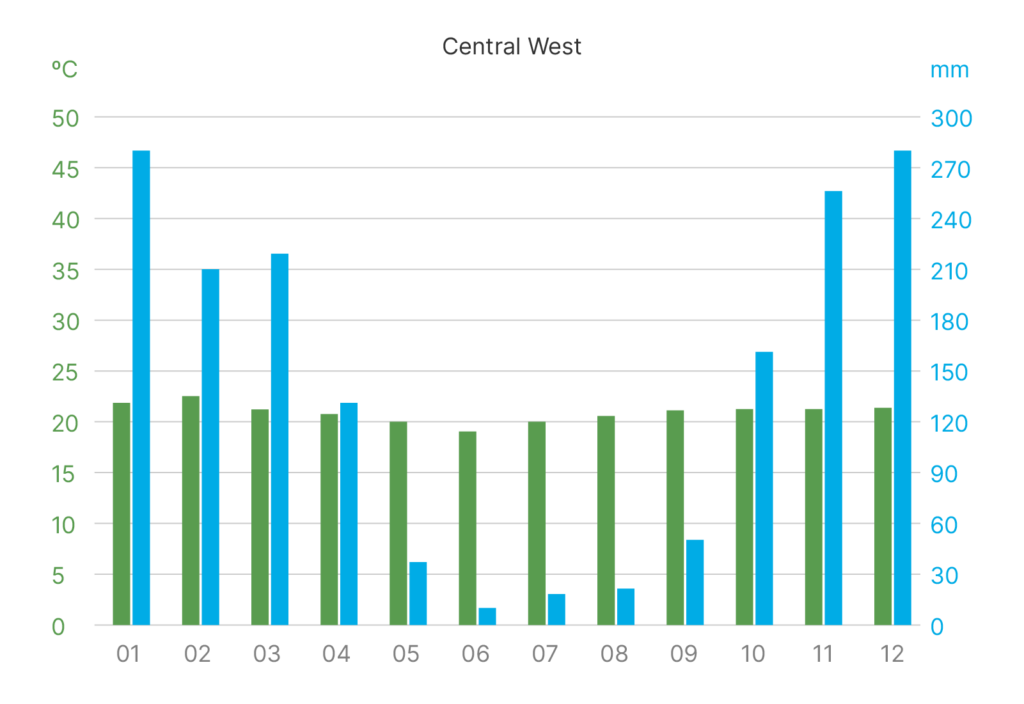
The hot wet season commences in October/November, and ends in April. As river systems swell, water levels rise in the Pantanal, transforming retreated marshlands and dusty plains into one of the largest wetlands on the planet. Most lodges in the Pantanal remain accessible throughout the year and excursions by boat are a perfect way to enjoy the lush tropical scenery. Don´t let the mosquitos and soaring temperatures deter you, wildlife inhabits the Pantanal throughout the year so there is no reason to write off the Pantanal in the wet season.
Many people agree however, that the dry season is best for game viewing in the Pantanal, as wildlife tends to congregate at and compete for the last drops of water at muddy pools. The dry season actually starts in May, but water levels only recede between July and October. This is when your chances of spotting a Jaguar are highest. It can get chilly at night during the dry season with night temperatures dropping to 15 °C so don´t forget your vest. This is also the case for other less visited regions in the Central West, such as the Chapada dos Veadeiros, where June and July mark the middle of the dry season. Rainfall levels are low, but the regions river systems and waterfalls still contain plenty of water.
South East:
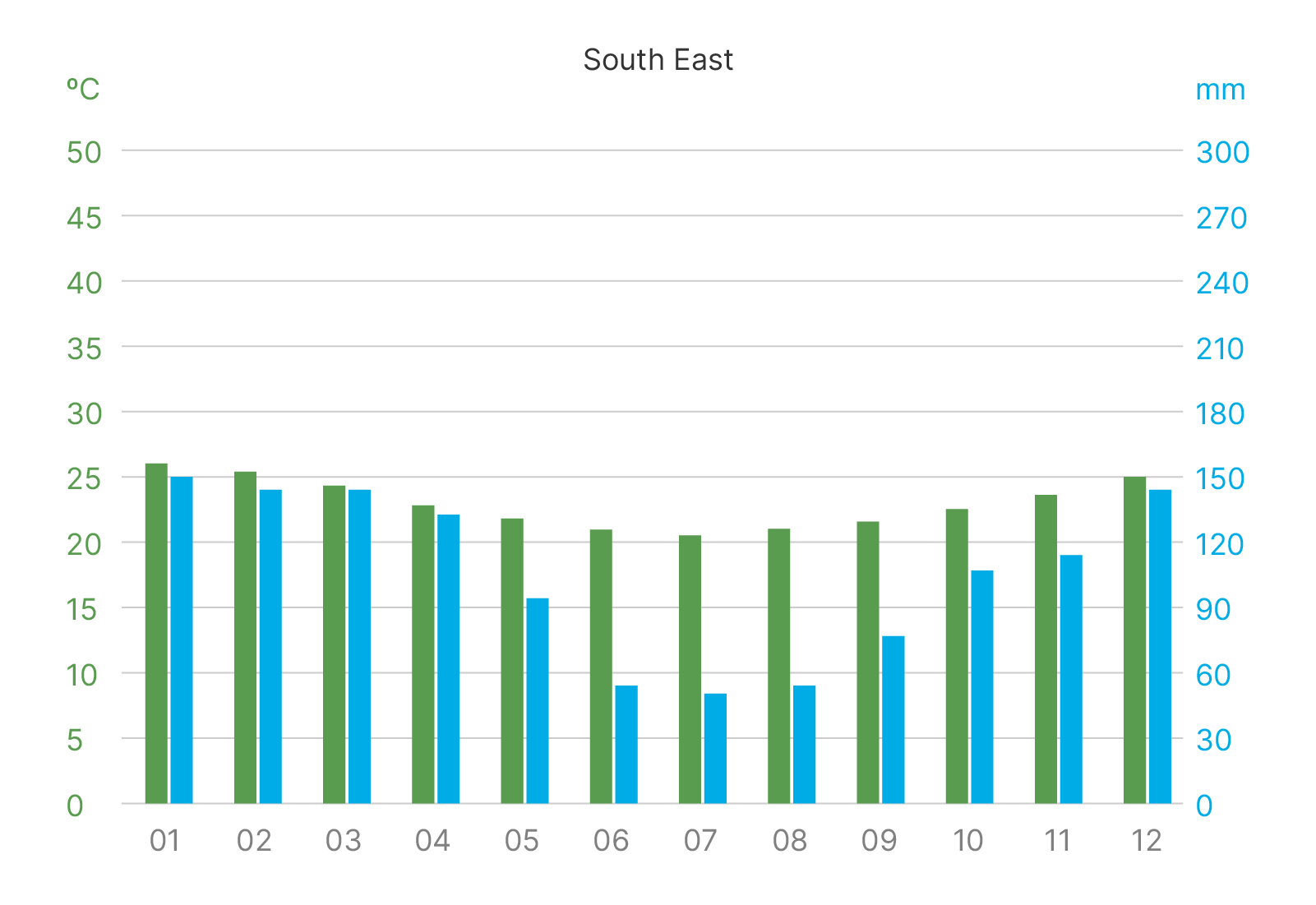
In the southeast, the dry season between May and September tends to coincide with clear skies and daytime temperatures hovering between 20-25 °C during the day and dropping below 10 °C degrees at night. That may be just perfect for those who can´t stand the heat, but perhaps not so for those who have come for the beach and are expecting lukewarm ocean waters in a hot tropical paradise. For those venturing into the higher lying regions in the extreme south, temperatures may well drop down to freezing at night.
The warm wet season commences in October / November and extends until March / April. Although tropical downpours are a common occurrence, they are often brief and temperatures generally remain between 25-30 °C. During this period, the water discharge of the Iguaçu Falls is at its highest. Perhaps the more thunderous the more spectacular! Some argue however, that the falls are more photogenic during the dry season as the large volume of murky water and excessive amount of spray during the wet season impedes visibility.
South
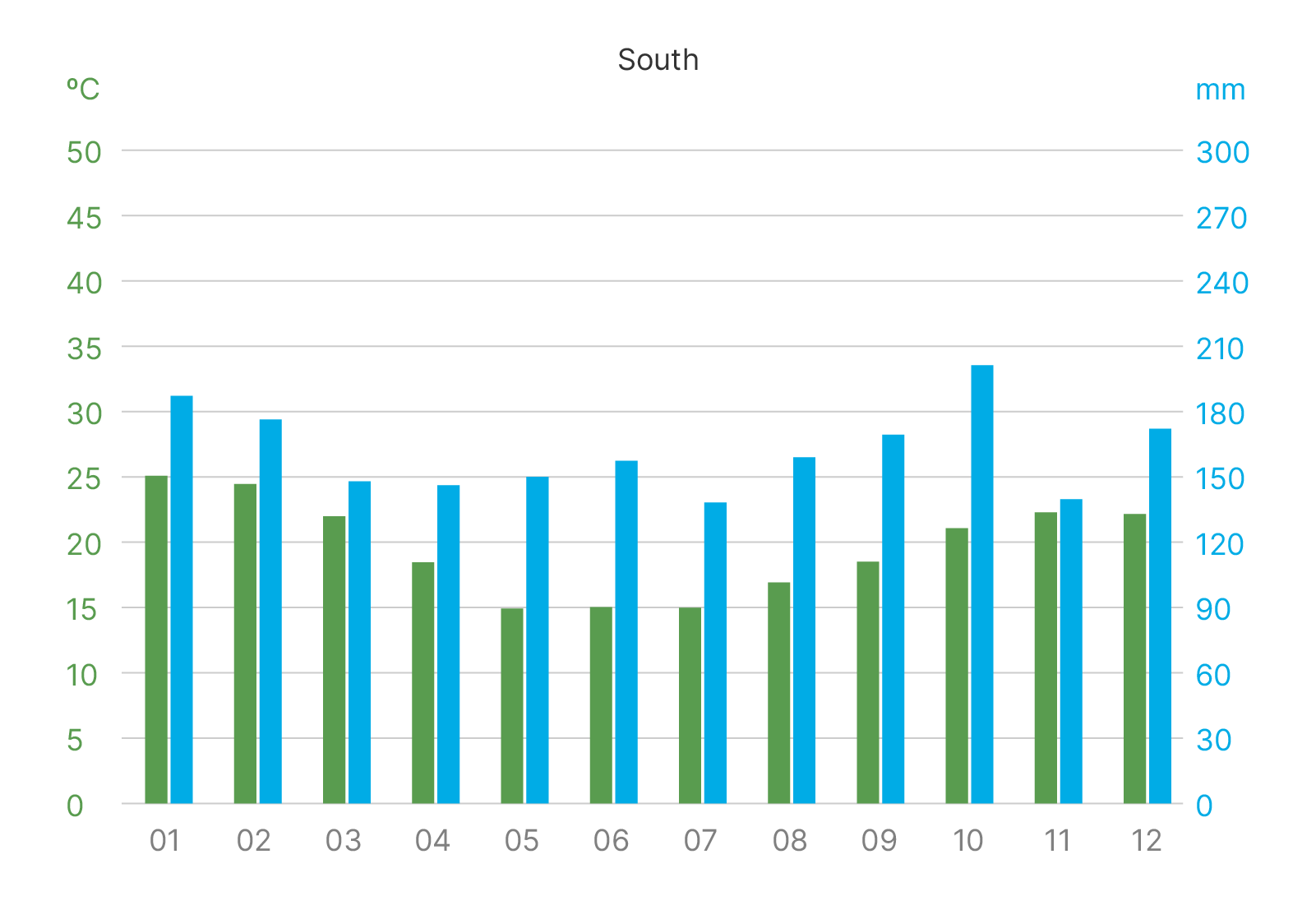
In terms of temperature, the subtropical climate in southern Brazil is similar to that of the southeast, with temperatures peaking above 30°C in the summer months, between November and April. The winter months between June and August are mild, ranging between 10°C and 19°C, although temperatures may plummet close to or even below zero. In higher areas, some hilltops may even see a thin carpet of snow, although this rarely happens. Rainfall is somewhat more evenly spread out over the year, although most precipitation is to be expected between June and October
Northeast:
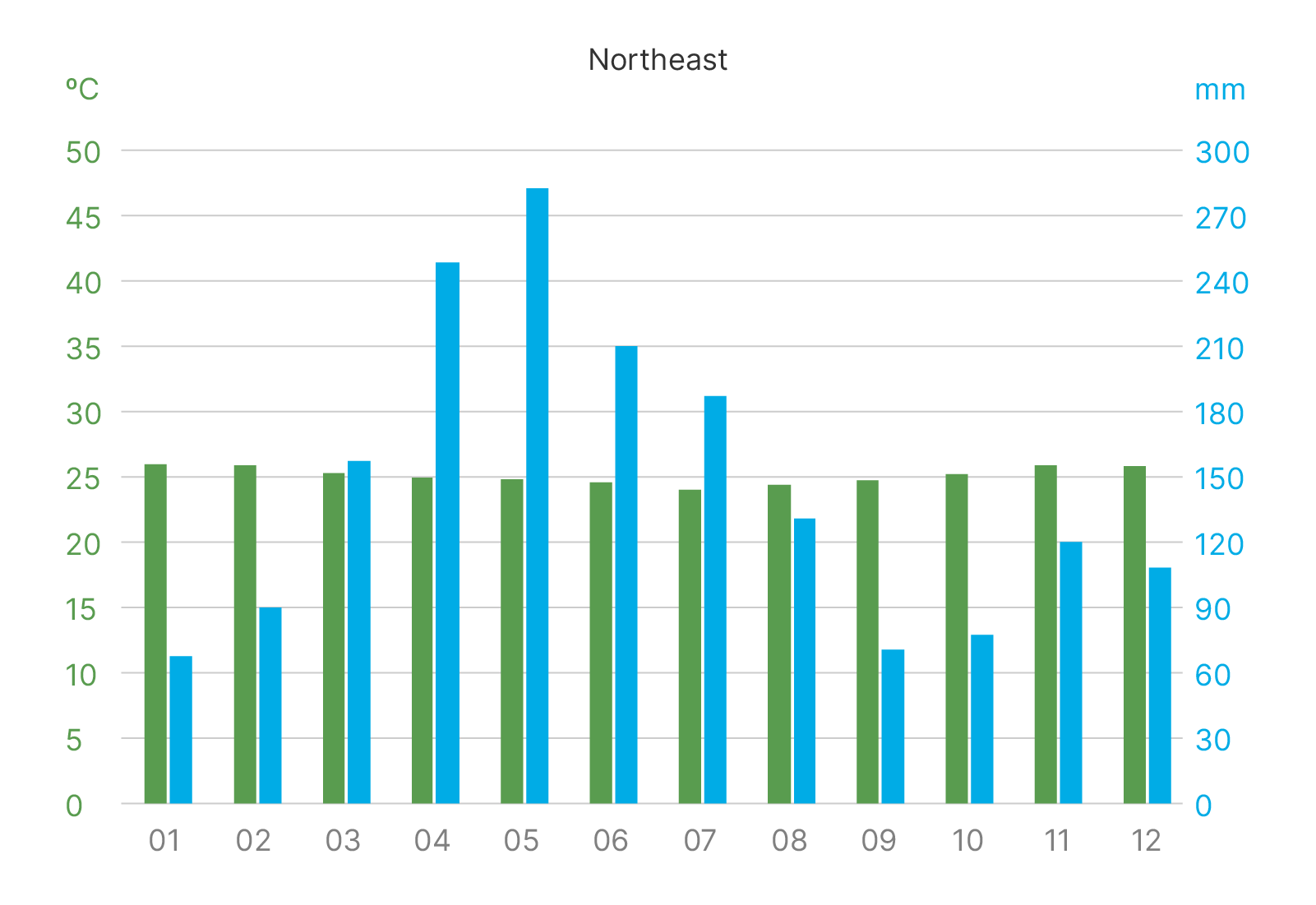
In the northeast, temperatures remain high throughout the year but April to August marks the wet season, so perhaps less ideal for people looking for clear blue skies and a crystal-clear ocean. This is however not a rule of thumb and you may find that snorkelling conditions are just fine! Rainy spells are intermittent (also along the coast) and in some regions rains hardly come at all. This is especially so for the region´s semi-arid interior, also known as the sertão, where rain tends to fall (and temperatures soar) between November and March – as is the case for the Chapada Diamantina National Park. Bear in mind that the cooler months between March and October are best for hiking and trekking.
Rainfall patterns shift as you head up further north to the Lençóis Maranhenses National Park, where rain tends to fall between January and March. The best time to visit this region is soon after that, between May and August, when the lagoons between the dunes fill up. Between August and December the coastal winds pick up, ideal conditions for kite surfers!
North:
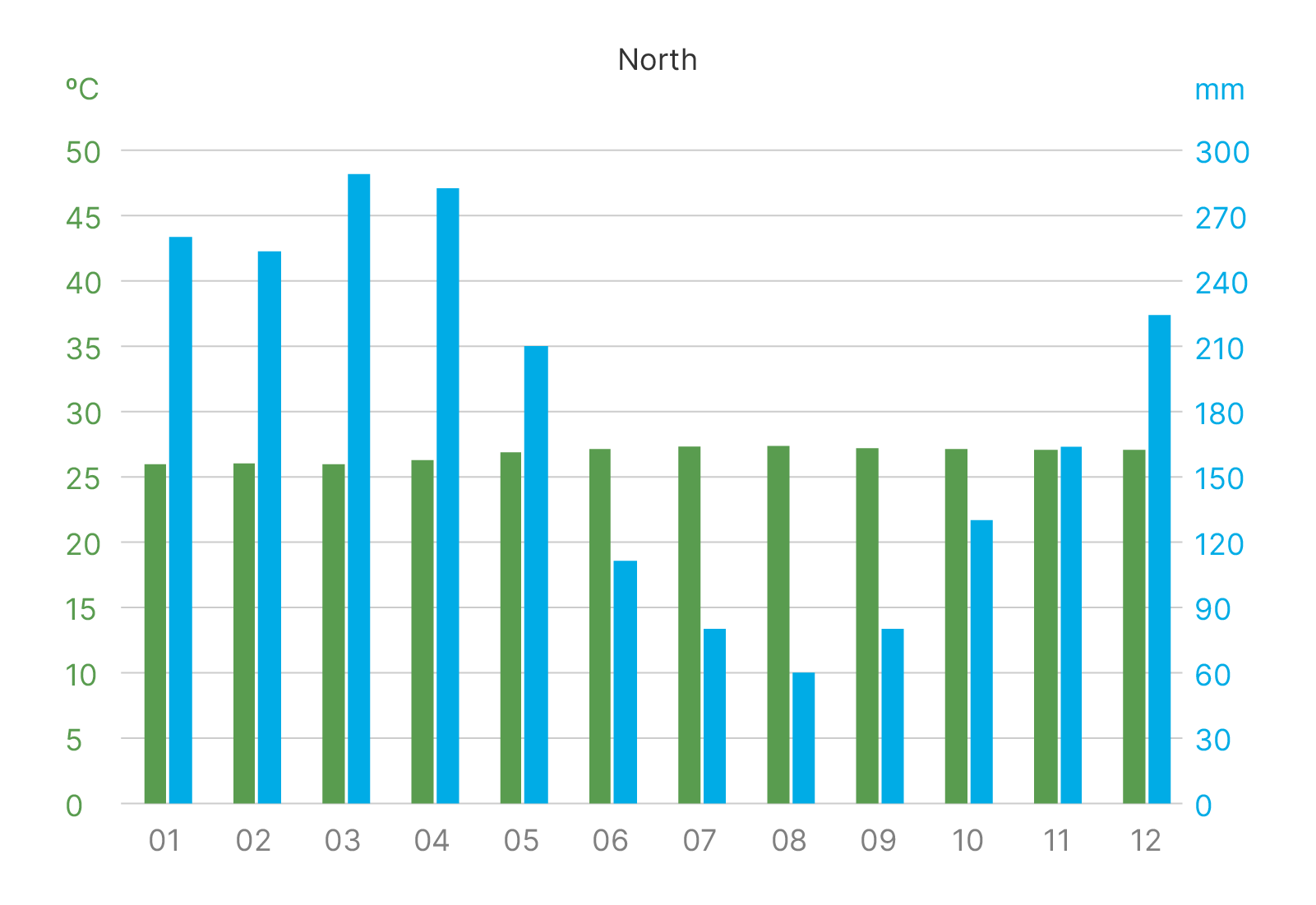
The Amazon is hot and sticky year round, with average temperatures above 26°C. Rain falls throughout the year but torrential downpours are most frequent between November and May. Some argue that these are the best months to immerse in the world’s largest rainforest. In response, (with a brief delay as the water that feeds the Amazon River also comes from afar), the Amazon River swells from January to June and may rise many meters – becoming even more impressive. Creeks and flooded forests become more accessible by boat, opening up a completely new world (canopy) to explore. As the water level subsides between July and December, walking trails become accessible and river beaches emerge, perfect for spotting caiman!
Casual light clothing and comfortable shoes are recommended during the day and in the evening. During the wetter months, mosquito´s may be a nuisance in some regions (especially the Pantanal). For this reason, we recommend taking along a pair of trousers, socks and long-sleeved shirts. Coats may be necessary if visiting southern and central-western regions, which may get chilly in the winter months (see climate section).
Choose your accommodations and excursions wisely – with sustainability as a guiding principle, Ideia Tours is strongly committed to developing and promoting responsible tourism that has a positive impact on the natural, social and cultural environments of the country. To do so we work in partnership with Travelife, an international non-profit organization that helps travel companies like ours put principles of sustainability into practice. Our Green Team conducts regular inspections and surveys in an attempt to monitor and evaluate the commitment of accommodations and local agents to sustainable tourism. Over the years, these efforts have led to the development of the Ideia Green Leaf , which we use to give a general indication as to which accommodations and services demonstrate a higher level of dedication towards sustainability. This system not only stimulates our suppliers to improve their sustainability standards but also allows travellers to make responsible choices when selecting an accommodation or service…
Furthermore, we encourage all our clients to be responsible travelers, and here are a few things they can do to impact positively on the destinations visited:
Community & Culture
Respect and support the local culture and traditions of the destinations you are visiting.
Learn
Travellers should familiarise themselves with the country´s culture, religion and local rules. Start with a countries language and learn a few words/phrases. Try to dress appropriately for the cultural site you are visiting. Topless for example, is forbidden at most Brazilian beaches. Choose restaurants and craft shops that do not promote cruelty or exploitation of endangered species. When out and about, do be curious and make the most of the local atmosphere. Be respectful – always ask before photographing or videoing people. Last but certainly not least, avoid any contact with drugs and prostitution. These illegal trades are associated with crime and violence and are harmful to travellers and local communities alike.
Support
Eat and drink local brands. Look for locally owned restaurants. Avoid excessive bargaining, purchases impact local livelihoods. That extra R$ makes a big difference to them. Keep traditions alive – buy traditional arts and crafts. Be aware of giving money to people on the street. Instead, support the communities through purchases or through a reputable local organization.
Environment
Help sustain the natural heritage of a destination by re-using and reducing your consumption and waste of precious resources such as water, food and energy.
Reuse
Many hotels have a towel policy. Re-use your towels instead of replacing them daily. Minimize waste by bringing your own refillable water bottle, coffee cup and shopping bag.
Reduce
Lights and appliances not in use should be unplugged before leaving home. Central heating systems should be set to a lower temperature. At your hotel, use water and energy sparingly. When not in your hotel room, turn off lights & air conditioning. Avoid large suitcases and bring your own toiletries to avoid packaged amenities provided by hotels.
Recycle
Separate paper from plastic and try to recycle whenever possible. Share your printed holiday brochure and maps with friends and family.
Footprint
Lower carbon emissions by booking less or at least direct flights. Choose bike or walking tours wherever possible. In some cases, shared transfers or public transport may offer a solution, particularly over long distances.Tread lightly, stick to designated trails and leave nature as untouched as possible. Avoid taking souvenirs such as petrified wood, turtle shells, and archaeological artefacts. Visit and support projects that work to protect the environment or endangered species.
